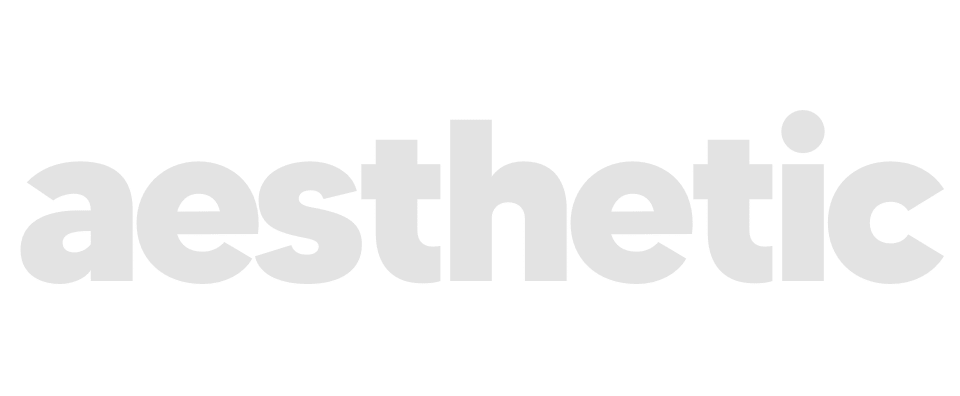Ever dived into paid advertising only to feel like you’re throwing money into a bottomless pit? You’re not alone. Many businesses jump in, hoping for instant results, but end up feeling lost and frustrated. But what if understanding a few common mistakes could save you time, money, and a lot of headaches?
Neglecting Ad Copy
Diving into the world of advertising without a clear understanding of your target market is like setting sail without a compass. It’s essential to invest time in researching your target market’s pain points, hopes, and dreams.
Why? Because this knowledge forms the foundation of effective ad copy.
Ad copy isn’t just about catchy phrases; it’s about resonating with your audience, addressing their needs, and offering solutions. If your ad copy doesn’t speak directly to your audience’s emotions and needs, it’s likely to fall on deaf ears. Remember, the best ad copy is born from thorough market research and a deep understanding of your audience.
Not Investing in Creative
In the realm of advertising, creative is king.
While a compelling message is crucial, the way it’s presented visually can make or break your ad’s effectiveness. Think of your ad creative as the storefront of your business in the digital world. If it doesn’t grab attention or resonate with viewers, they’ll simply scroll past. Businesses that skimp on high-quality, engaging ad assets often find themselves facing lackluster results. It’s not just about having a pretty picture or video; it’s about creating visuals that tell a story, evoke emotion, and drive action. Investing in high-converting ad assets is not a luxury; it’s a necessity for success in the competitive digital advertising landscape.
Incorrectly Setting Up Data Tracking (or not tracking anything at All
One of the gravest mistakes in the world of digital advertising is neglecting data tracking or setting it up incorrectly. Imagine sailing a ship without a compass; you wouldn’t know where you’re headed or if you’re even on the right course. Similarly, without proper tracking, you’re essentially running ads blindfolded.
Data is the backbone of any successful ad campaign. It informs you about what’s working, what’s not, and where adjustments are needed. More importantly, platforms like Facebook rely heavily on data to optimize ad delivery. If you’re not tracking results accurately, Facebook won’t know which audience segments to target or how to best serve your ads. This can lead to wasted ad spend and missed opportunities.
Moreover, without accurate data, you won’t have a clear understanding of your return on investment (ROI). This can lead to misguided decisions, such as prematurely halting a campaign that’s actually profitable or continuing to pour money into one that’s underperforming.
In essence, if you’re not tracking, you’re not optimizing. And if you’re not optimizing, you’re leaving money on the table.
Neglecting Screen Size
In today’s digital age, consumers access content from a myriad of devices, each with its own unique screen size. From desktop monitors to smartphones, tablets to smart TVs, the variety is vast. When it comes to advertising, especially on platforms like Facebook, neglecting to consider these different screen sizes can be a costly oversight.
Each ad placement on Facebook, whether it’s the main feed, Stories, or the right-hand column, has its own recommended format and aspect ratio. Using the wrong format can lead to your ad being cropped awkwardly or important information being left out. This not only diminishes the visual appeal of your ad but can also confuse or mislead your audience.
For instance, an ad designed for a desktop might look great on a large screen but could be too cluttered or unreadable on a smartphone. Conversely, an ad optimized for mobile might appear too simplistic or lack impact on a larger screen.
Moreover, with the increasing shift towards mobile browsing, ensuring your ads are mobile-friendly is no longer optional; it’s a necessity. Mobile users are known for their short attention spans. If your ad doesn’t display correctly or takes too long to load because it’s not optimized for mobile, you risk losing a potential customer in seconds.
In summary, always design with the end platform in mind. Test your ads across different devices and placements to ensure they look their best and convey your message effectively, regardless of where they’re viewed.
Setting and Forgetting
The allure of digital advertising, especially on platforms like Facebook, is the promise of automation. You set up your campaign, allocate a budget, and let the algorithm do its magic. However, this doesn’t mean you can simply “set and forget” your ads. Such an approach can lead to wasted ad spend, missed opportunities, and even negative results.
Paid advertising is dynamic. Market conditions change, audience behaviors evolve, and platform algorithms get updated. What worked last month might not be as effective today. Continuous monitoring and optimization are crucial to ensure your campaigns remain effective and deliver the desired ROI.
Here are some reasons why “setting and forgetting” can be detrimental:
- Ad Fatigue: Over time, the same audience seeing the same ad can lead to ad fatigue. They become blind to your ads, leading to decreased engagement and increased costs.
- Budget Misallocation: Without regular checks, you might be spending more on underperforming ads while missing out on potential opportunities elsewhere.
- Changing Audience Dynamics: Audience preferences and behaviors aren’t static. Regularly reviewing audience insights can provide valuable information to tweak your campaigns.
- Platform Updates: Ad platforms, especially Facebook, frequently update their algorithms. Staying updated ensures you’re leveraging the latest features and best practices.
Moreover, regular monitoring allows you to gather data on what’s working and what’s not. This iterative approach enables you to refine your strategy, test new creatives, or experiment with different audience segments.
In essence, while automation tools and algorithms are powerful, they’re not a substitute for human oversight. Regularly reviewing and adjusting your campaigns is essential to ensure you’re getting the most bang for your buck.
Going too niche with your audience
One of the most touted advantages of social media advertising is the ability to target specific audiences based on a myriad of criteria, from demographics to interests and behaviors.
While this granularity is undoubtedly powerful, there’s a common misconception that the narrower your audience, the better your results. In reality, going too niche can sometimes backfire.
Here’s why overly narrow targeting might not always be the best approach:
- Limited Reach: By narrowing down too much, you might be excluding potential customers who don’t fit into your very specific criteria but would still be interested in your product or service.
- Higher Costs: Smaller audience sizes can lead to increased competition among advertisers for the same audience segment, driving up costs.
- Missed Opportunities: Broad audiences allow the platform’s algorithm to find potential customers you might not have considered. Facebook’s algorithm, for instance, is adept at finding potential converters within a broader audience.
Interestingly, broad audiences often perform better on platforms like Facebook. The algorithm uses its vast data to identify and serve ads to users within that broad audience who are most likely to convert. By giving the algorithm a larger pool to work from, you’re leveraging its strength in identifying potential customers.
That said, this doesn’t mean you should always avoid niche targeting. It has its place, especially when promoting very specific products or when retargeting. The key is to strike a balance and not limit your campaigns unnecessarily.
Choosing the right campaign objective
When setting up a campaign on social media platforms, one of the first decisions you’ll make is selecting an objective.
This choice is crucial because it informs the platform what you want to achieve, and in turn, the platform optimizes your ads to reach users most likely to perform that specific action.
Here’s how it works:
- Objective-Driven Targeting: When you pick an objective, the platform uses its vast data to target users who have shown behaviors aligned with that objective. For instance, if you choose a ‘Traffic’ objective, the platform will prioritize users who frequently click on links and visit websites. However, these users might not necessarily be the ones who make purchases.
- Sales or Conversion Objectives: If your goal is to drive sales, then selecting a ‘Sales’ or ‘Conversion’ objective is crucial. By doing this, the platform will focus on delivering your ads to users who have a history of making purchases through the platform. It identifies these users based on various signals, such as those who’ve engaged with a ‘Shop Now’ button in the past 14 days or have a track record of buying products on the platform.
- Leveraging User Signals: Social media platforms continuously gather user signals – actions that users take, which indicate their preferences and behaviors. By understanding these signals, platforms can predict which users are more likely to align with your chosen objective, ensuring that your ad spend targets the right audience.
In essence, your campaign objective is more than just a selection; it’s a directive to the platform on who to target. By understanding and leveraging this, you can ensure that your ads reach users who are not just interested, but also more likely to convert.
Stopping and starting ads
Diving into the world of social media advertising, one might assume that pausing and resuming ads as needed is a harmless action. However, this approach can have unintended consequences, especially when it comes to the learning phase of your campaigns.
- Understanding the Learning Phase: When you launch a new ad or make significant changes to an existing one, most platforms, like Facebook, enter what’s called the ‘learning phase’. During this period, the platform is gathering data, understanding how users are interacting with your ad, and optimizing its delivery to get you the best results.
- Interrupting the Learning: Every time you pause an ad, especially one that’s in the learning phase, you’re essentially resetting this process. When resumed, the ad might re-enter the learning phase, delaying the time it takes for the platform to optimize its delivery.
- Impact on Ad Performance: Ads that are frequently stopped and started tend to have higher costs and lower performance. The algorithm values consistency. When denied that, it struggles to find the optimal strategy for your ad, leading to wasted ad spend and missed opportunities.
- The Importance of Patience: It’s natural to want to pause an ad that doesn’t seem to be performing well initially. However, patience is key. It’s recommended to let ads run consistently, especially during the learning phase, to give the algorithm enough time and data to optimize.
- Strategic Adjustments Over Pausing: Instead of frequently pausing ads, consider making strategic adjustments based on performance data. If an ad isn’t performing well, delve into the analytics. Maybe it’s a particular audience segment that’s not responding, or perhaps the creative needs tweaking. Making informed, data-driven decisions is more effective than the stop-start approach. If you want to cut costs over a certain period of time, rather than turning your campaigns off, simply spend less on your campaigns.
To harness the full power of social media advertising, it’s essential to let your campaigns run their course, especially during the learning phase. Regularly monitor performance, make necessary adjustments, but avoid the temptation to frequently pause and resume ads.
While it might seem like a minor action, frequently stopping and starting ads can have a significant impact on your campaign’s success. For optimal results, it’s best to let your ads run consistently, allowing the platform’s algorithm to do its job and optimize your campaigns effectively.
What’s next?
Paid advertising, especially on social media platforms, offers businesses a powerful tool to reach their target audience and drive conversions. However, like any tool, its effectiveness depends on how it’s used.
Missteps, no matter how minor they might seem, can lead to wasted ad spend, missed opportunities, and suboptimal results.
Click here to learn about the biggest myths around paid ads.




